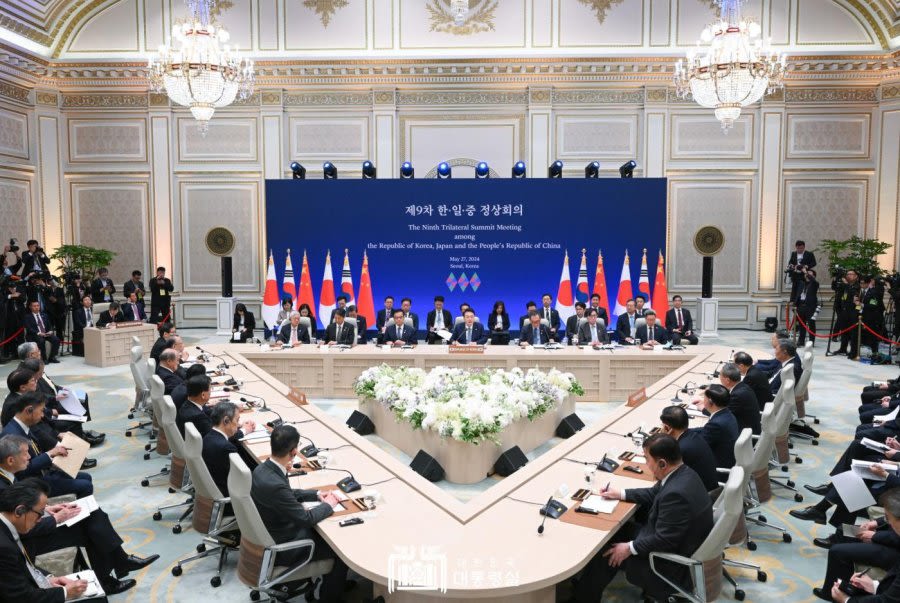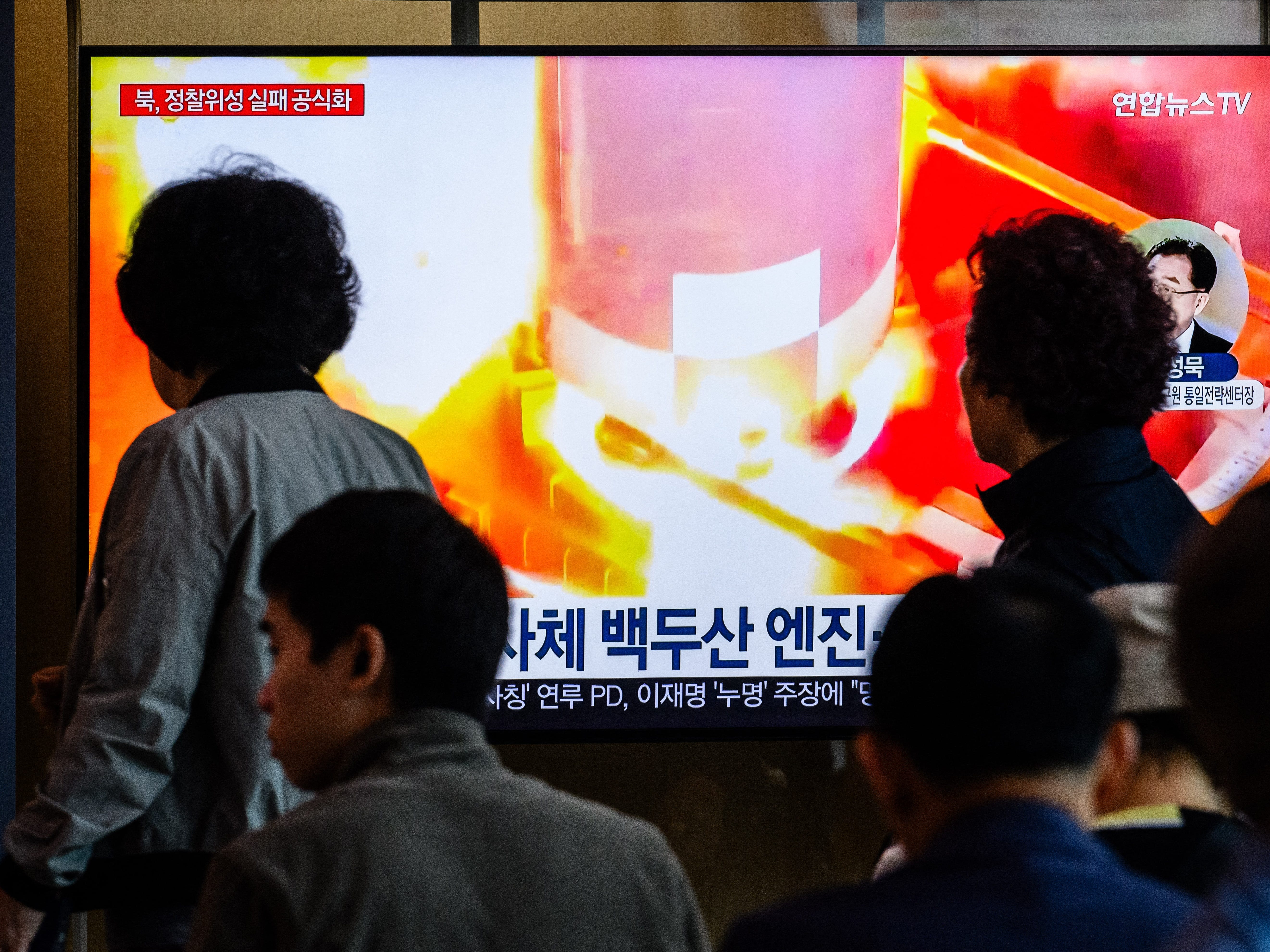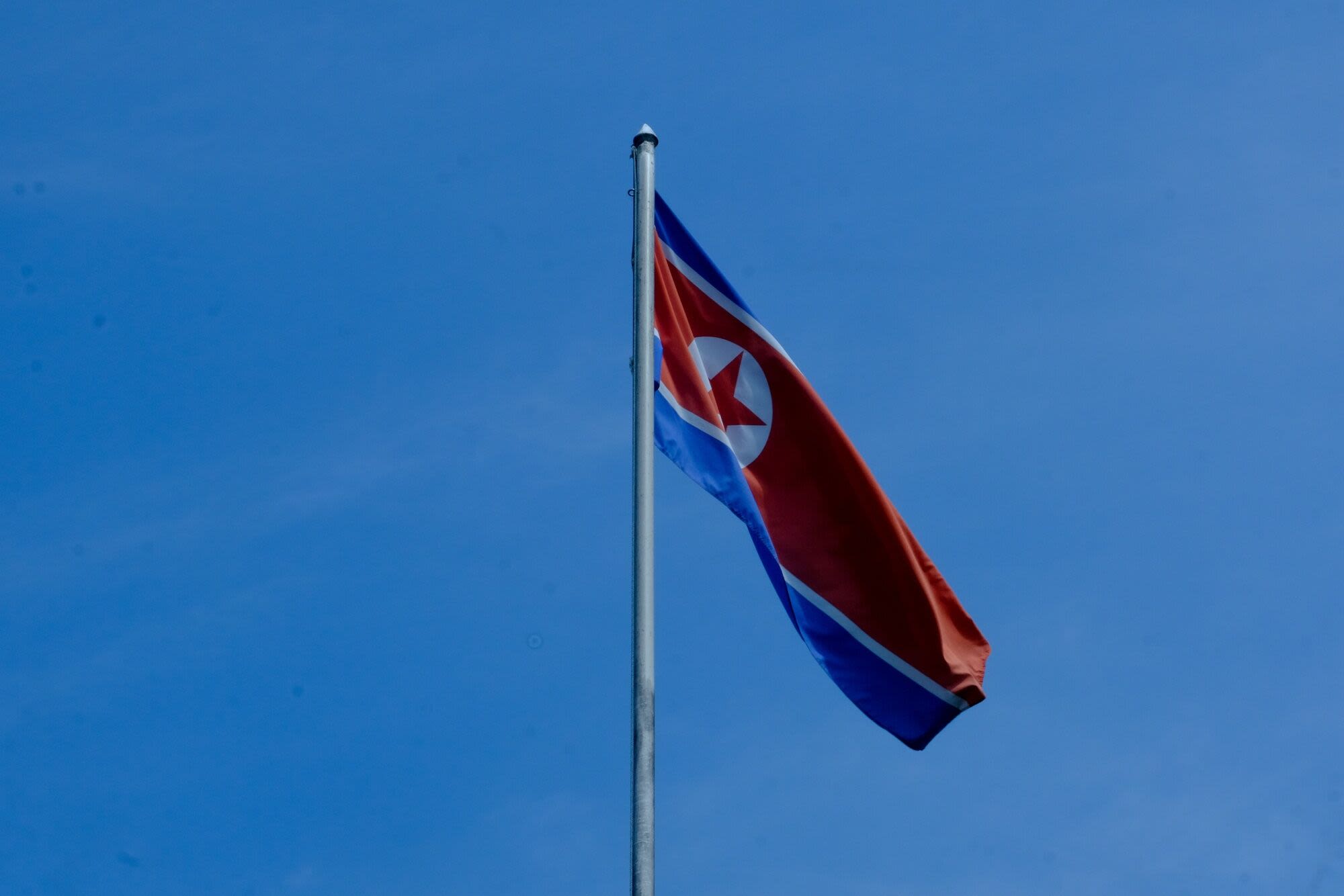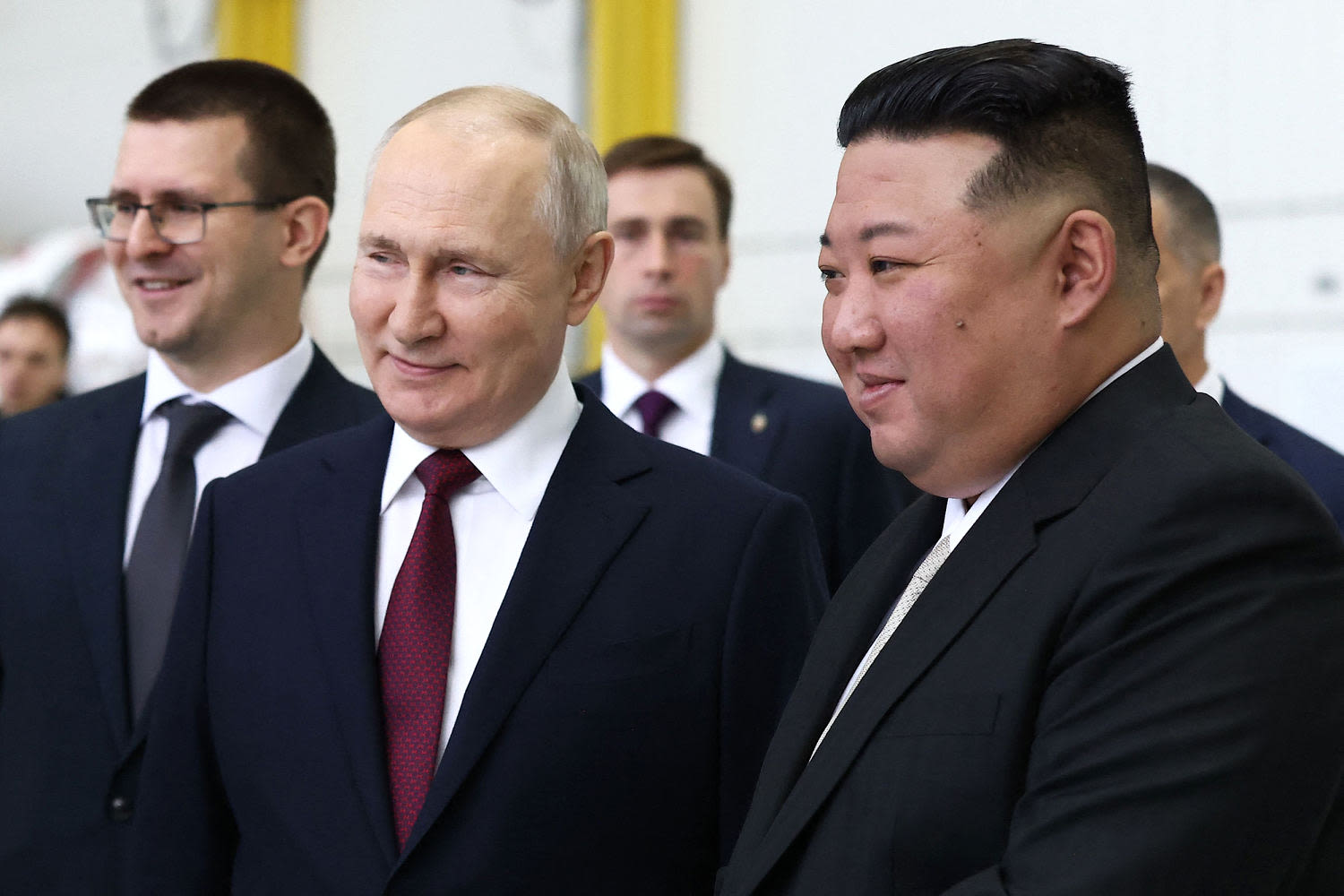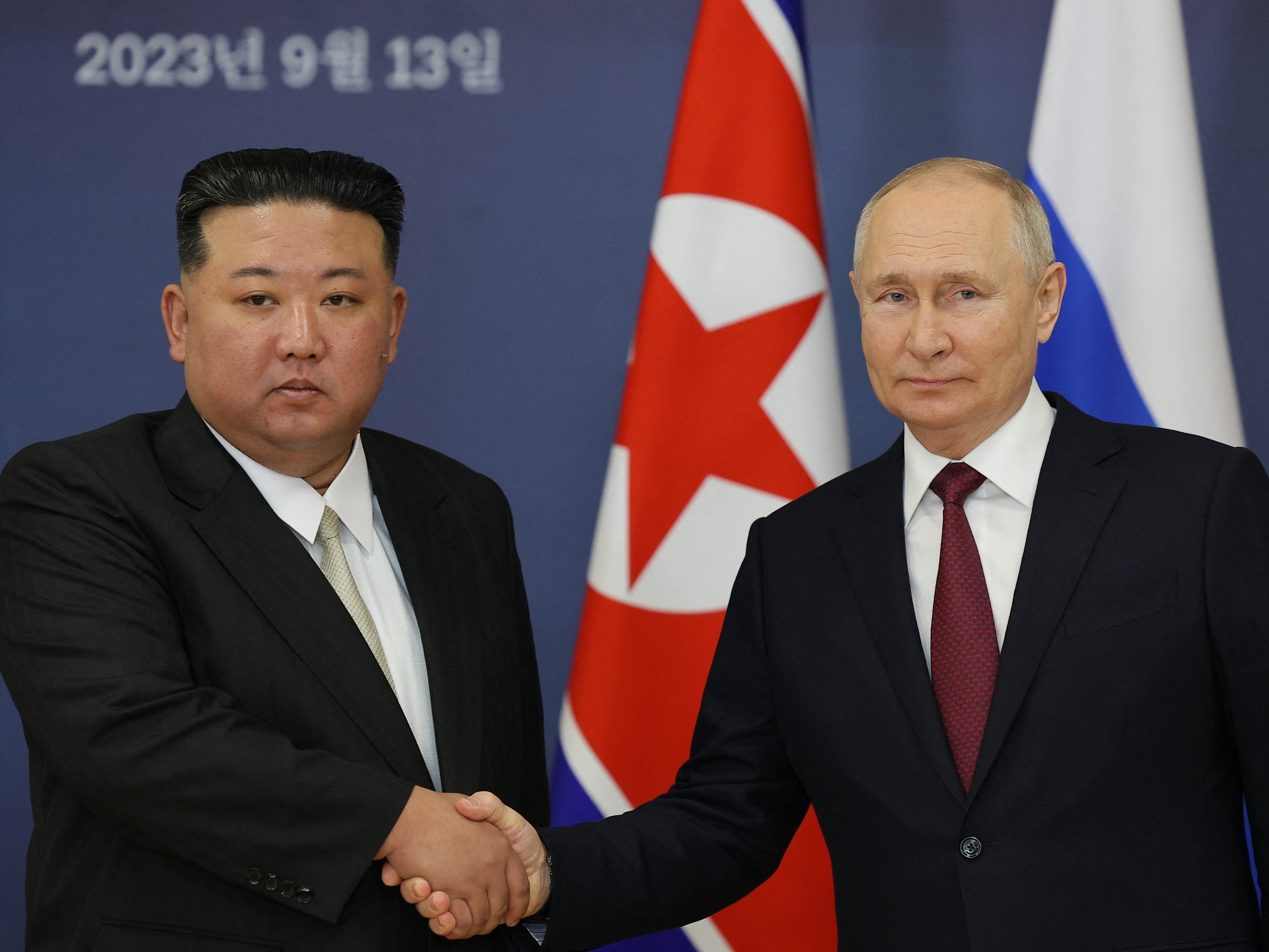Search results
News about North Korea, China, Japan
News about North Korea, Russia, rocket explosion
Also in the news
North Korea has a military nuclear weapons program and, as of 2024, is estimated to have an arsenal of approximately 50 nuclear weapons and sufficient production of fissile material for six to seven nuclear weapons per year. North Korea has also stockpiled a significant quantity of chemical and biological weapons.
- Introduction
- What Are North Korea’s Nuclear Capabilities?
- What Missiles Has North Korea Tested?
- Have Other Countries Aided North Korea’s Nuclear Program?
- What Punitive Steps Has North Korea faced?
- Does North Korea Possess Other Weapons of Mass Destruction?
- What Are North Korea’s Conventional Military Capabilities?
- Does It Pose A Cybersecurity Threat?
- What Drives North Korea’s Militarization?
The United States and its Asian allies see North Korea as a grave security threat. North Korea has one of the world’s largest conventional military forces, which, combined with its missile and nuclear tests and aggressive rhetoric, has aroused concern worldwide. But world powers have been ineffective in slowing its path to acquire nuclear weapons. ...
The exact size and strength of North Korea’s nuclear arsenal are unclear. However, analysts say Pyongyang has tested nuclear weapons six times and developed ballistic missiles capable of reaching the United States and its allies Japan and South Korea. The North Korean regime possesses the know-how to produce nuclear bombs with weapons-grade uranium...
North Korea has tested more than one hundred ballistic missiles with the ability to carry nuclear warheads, including short-, medium-, intermediate-, and intercontinental-range missiles and submarine-launched ones. The regime successfully tested intercontinental ballistic missiles (ICBMs), each capable of carrying a large nuclear warhead, in July a...
The program is predominantly indigenous but has received external assistance over the years. Moscow, for instance, assisted Pyongyang’s nuclear development from the late 1950s to the 1980s: it helped build a nuclear research reactor and provided missile designs, light-water reactors, and some nuclear fuel. In the 1970s, China and North Korea cooper...
North Korea’s withdrawal from the Nuclear Nonproliferation Treaty (NPT) in 2003 and its missile tests and first nuclear test in 2006 prompted the UN Security Council to unanimously adopt resolutions that condemned North Korea’s actions and imposed sanctions against the country. The Security Council has steadily ratcheted up sanctions through subseq...
North Korea is believed to have an arsenal of chemical weapons, including sulfur mustard, chlorine, phosgene, sarin, and VX nerve agents. The regime reportedly has the “capability to produce [PDF] nerve, blister, blood, and choking agents” and is estimated to have stockpiled [PDF] between 2,500 and 5,000 tons of chemical weapons. These toxins can b...
North Korea’s military is the world’s fourth largest, with nearly 1.3 million active personnel, accounting for about 5 percent of the total population. More than six hundred thousand others serve as reserve soldiers. Article 86 of the North Korean constitution[PDF] states, “National defense is the supreme duty and honor of citizens,” and it require...
North Korea’s cyberwarfare capabilities have advanced significantly over the years, and its hackers use increasingly sophisticated tools to target government, media, financial, and private institutions around the world. Some experts say that North Korea’s cyberwarfare capabilities now pose a more immediate threat than its military programs. Pyongya...
North Korea’s guiding philosophical principles have been juche (self-reliance) and songun (military-first politics). The military plays a central role in political affairs and its position has been steadily elevated through the Kim dynasty. North Korean leadership believes that hostile external forces, including South Korea and the United States, c...
Dec 16, 2021 · North Korea continues to advance its nuclear weapons and missile programs despite UN Security Council sanctions and high-level diplomatic efforts. Recent ballistic missile tests and military parades suggest that North Korea is continuing to build a nuclear warfighting capability designed to evade regional ballistic missile defenses.
Key Takeaways. North Korea's Nuclear Progress. North Korea's pursuit of nuclear weapons has been deliberate, determined, and patient. The nuclear program is not the most secretive in the world and North Korea's progress has not come as a surprise. US Diplomacy.
Nov 18, 2022 · Nov. 18, 2022. Leer en español. SEOUL — North Korea has test-fired a flurry of missiles in recent weeks, culminating Friday with its second intercontinental ballistic missile this month and one...
Mar 7, 2017 · The history of North Korea’s nuclear program can be traced back to the Cold War, when the Korean War convinced leader Kim Il Sung — who ruled the nation from 1948 to 1994 — that the...
Sep 30, 2013 · Introduction. Launched in 2003, the Six Party Talks are aimed at ending North Korea ’ s nuclear program through negotiations involving China, the United States, North and South Korea,...
